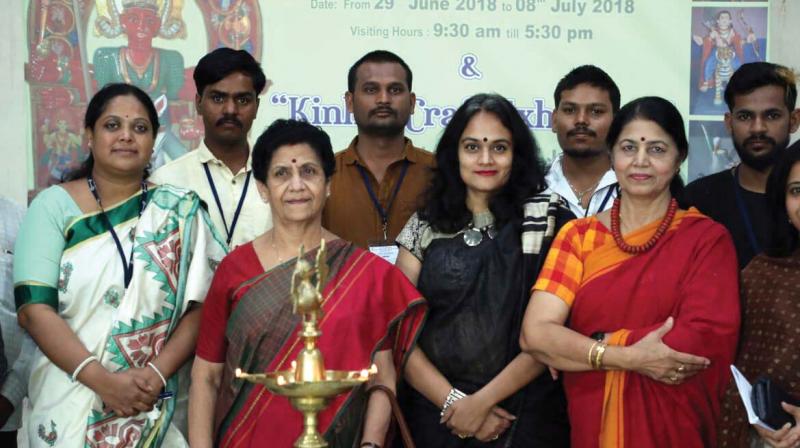Kindling the Kinhala form
An artform with a history and tradition seeped in rich creativity, it also gives children organic toys to play with.

“Every block of stone has a statue inside it and it is the task of the sculptor to discover it.”
Michelangelo
Bengaluru is always brimming with art endeavours. The Indira Gandhi National Centre for Arts, Bengaluru hosted a unique workshop to revive an age-old form of art which originated from rural Karnataka. Kinhala is a combination of specially carved and painted wooden sculptures and toys, traditionally known and famous for their unique genre. The uniqueness of these toys is in the usage of light-weight shallow wood. The artform ranges from small cute toys to wooden sculptures. Kinhala includes folk festival idols and figurines, colourful miniature models of birds, animals, vegetables and fruits as well. It is practiced by a few families who are known as “chitragars.” (painters).
They claim that their ancestors migrated from Gujarat during the days of the Vijayanagar Empire. Kinnal is also a historical village where this unique artform is alive and inspiring younger chitragaaras to create beautiful crafts, toys and idols. The workshop which began on June 29 went on till July 5, post which the artists also held an art exhibition which exposed them to a wider audience. The Kinhala artists were tasked with creating five devi idols in 10 days. Legend has it that these, time-tested wooden toys are the only and ultimate saviour for urban children from plastic toys since they are organic.
“Kinhal art depends on Lajjawara (paint made of metal tin), light wood and natural colours. Indigenous Kinhal toys have the Geographical Indication number 213 from World Trade Organisation,” says Kavitha DK, project co-ordinator. Director of IGNCA Dr Deepthi Navarathna elaborated, “Ignca’s mandate is to revive and raise awareness about indigenous artforms at a the national and international level. Kinhal art deserves much acclaim. We are proud to document and further bring out a DVD and book about this rare and vanishing art form.”
Avik Bandyopadhyay, CEO of MayinArt whose endeavour it is to help rural and local art explained, “Having travelled extensively through rural Karnataka and other villages prominent for arts and crafts, I was struck by the beauty of Kinhal craft — which has so far been unable to catch the fancy of the public eye. We have a firm belief and deep desire to help such rural artists and craftsmen, who, belonging to non-English speaking communities, struggle to showcase their work in larger national and international markets. Consumers, art and craft connoisseurs should lead the effort in acquiring authentic hand-made products.” The workshop concluded this week and has opened new opportunities for artists and artisans.
— The writer is an art expert and curator.

